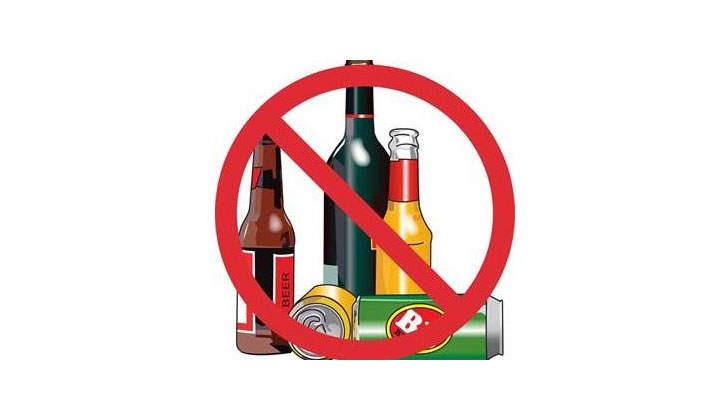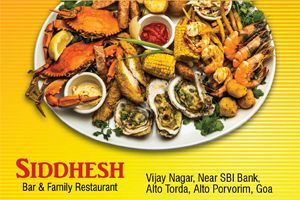Believe it or not! For Chief Minister Manohar Parrikar the reins of power always come bundled with some major turmoil. Be it the iron-ore mining industry disaster in 2012 or the ongoing liquor ban crisis, Parrikar’s sarkar has always been marked with ‘panvoti’ than ‘parivartan’. One may recall that within six months of taking charge in 2012, Parrikar had to face the biggest ever challenge in the form of the Justice M B Shah Commission report on illegal mining, which exposed a Rs 35000 crore scam in Goa and termed the entire activity as illegal. The report that nailed two former Congress Chief Ministers was a
timely opportunity for Parrikar to take ‘credit’ for suspending the decades-old illegal activity, but he did not foresee its aftermath. The Supreme Court intervention, further closure of mines and lakhs of people being rendered jobless with huge liabilities were the stunning consequences of that report.
A similar situation is now unfolding in 2017. After initially ignoring the Supreme Court’s December 15, 2016 order banning sale of liquor within 500 meters of State and National highways owing to the election mood, the Parrikar-led coalition government now finds itself on the back foot and helpless. Though a review petition is the need of the hour, the Government is dragging its feet on the same, asking the over 3000 odd affected parties to wait for another two to three months.
From April 1st the State and National highways passing through the coastal state of Goa went dry, with
state authorities going full steam to implement the Supreme Court ‘liquor ban’ order. Licenses of as many as 3200 liquor serving outlets have not been renewed by the Government, a move which is going to have serious multiple implications. It will affect the livelihood of thousands of people depending on
this business, and also have a negative impact on the tourism industry and cause a further revenue drop for the State treasury.
The bars, liquor vendors, restaurants, star hotels, taverns and small pubs located within 500 meters of the highways have stopped serving alcohol to their customers, as a result of which people are turning their back to these places, especially restaurants and hotels, even for food. Vasco town has been hit the most by the Apex Court verdict.
The nature of Goa’s topography and geography makes it one of the hardest hit small states, due to the Supreme Court’s December 15, 2016 order (revised on March 31). The liquor traders in the State are already agitated and are looking to Parrikar to protect their earning and livelihood.
Parrikar has assured the traders that the Government would try and save at least one-third of these outlets and give others an option to shift or dispose their stocks beyond the 500 meters set by the court and see that the livelihood of the affected parties is not compromised. After studying the revised SC order, the Government has decided to renew licenses of 1000 liquor outlets located beyond 220 meters of the highway – those in the municipality and village areas.
In the case of the remaining 2200- odd outlets, the Government is exploring the possibility of relocating them and allowing them to sell their stock at an alternate location.
After losing out on an opportunity to file a review petition in the SC to consider Goa as a special case and seek relaxation in line with states like Meghalaya and Sikkim, the Government has now announced it will file a writ petition, but only in the next two or three months.
“The Supreme Court revised judgment which came on March 31 was a black day for the liquor industry
in Goa. It has spelt doom for over thousands of families depending on this business. As all know, Goa is a
well-known destination, where tourists come to consume cheap and good quality liquor. It is an age-old business and the only source of earning for many,” the All Goa Liquor Traders Association President Dattaprasad Naik said. “Now, Government is our only hope. Filing of review petition before the Court at the earliest is the only solution. Or it will have to de-notify the State highways or allow us to relocate,”
he said.
Speaking to the media, Parrikar said that his Government is working out modalities to help the affected parties. As per the existing excise laws, the bar and liquor store owners are allowed to shift their unsold stock to new premises; but unfortunately it has not received any applications for the same. “For now, immediately we will start the renewal process of 1000 liquor outlets located beyond 220 meters of highways in the municipal areas. The excise department will collect the data and undertake renewals,” Chief Minister said.
In a bid to provide relief to the balance 2200 affected outlets, the State government has worked out a strategy which includes allowing the impacted outlets to shift their premises outside 500 metres or 220 metres as applicable according to their local bodies. “Government will not charge any additional fee for such establishments which apply to shift their premises outside 500 metres or 220 metres,” he said. “They will be permitted to shift to new premises, provided it (premises) fits into the criteria proposed by
Excise rules and regulations,” the Chief Minister added. One of the most popular tourism destinations in the country, Goa is well known for its liberal liquor regime, where alcohol is taxed less as compared to other states. There are over 11000 licensed liquor vendors in the state, including bar and restaurant licence holders, and more than 3000 such outlets are facing the axe following the apex court order.
The enforcement of the highway liquor ban has not only come as a major blow to thousands of families dependent on this business but for the tourism industry too, which was slowly coming back to shape from the effect of demonetization. The stakeholders are now fearing a dip in tourist footfalls.
“The impact on the tourism industry is going to be immense. There are a number of people who like to sit for a drink after a hard day’s work. We predict a poor forthcoming tourism season if the situation continues,” president of Travel and Tourism Association of Goa (TTAG) Savio Messias said. “We offer holiday packages to the people. Also, the tourists who visit the State, come on their own dream package – that is sightseeing, eating and drinking. Even if one part of this package goes missing, then the tourists are reluctant to visit that place. This is the current situation in Goa,” he stated.
As the State enters the new financial year, the closure of 3000 liquor outlets is going to further poke holes in the State exchequers. Already reeling under a financial crisis, the dreams of the State which was looking to generate revenue through excise have been shattered by the SC verdict.
Sources in the finance department confirm that the revenue from excise department had touched the 325 crore mark in 2015-16, which was almost 25 percent higher compared to the previous year. “In 2016-17 also it is expected to be somewhere between 350-400 crores. But then with demonetization, it may be less also,” sources said adding “with non-renewal of 3000-odd licenses, which is almost 35 percent of the total outlets, there would be substantial decline in revenue for the new financial year.”
All eyes are now set on Manohar Parrikar – on what is he going to do to get the State and its people out of this turmoil.
WHAT THE SC ORDER STATES
The apex court, by its December 15, 2016 order, had banned the sale of liquor within 500 metres on either side of State and National highway. A bench comprising Chief Justice Jagdish Singh Khehar, Justice DY Chandrachud and Justice L Nageswara Rao, however, relaxed the ban by reducing it to 220 metres in respect of municipal or local bodies with a population of 20000 or less along the highways, while also exempting Sikkim and Meghalaya from the above restrictions.
WHO ARE AFFECTED
The verdict affects 789 wine shops, all of which are retail units within 500 meters limit. In addition to this, around 2289 bars and restaurants that include iconic and high-end restaurants are now forced to withdraw liquor from their menus. Of these, there are 1000 outlets which can be saved directly as they fall beyond 220 meters from the highways in the municipal areas.
TEAM TNV



























